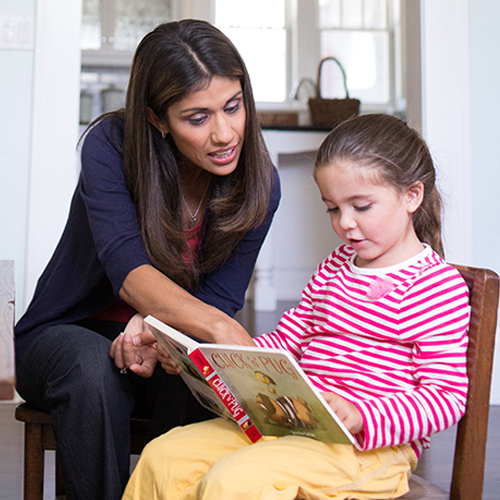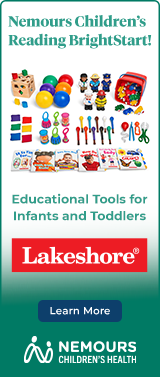Reading a book serves many valuable purposes:
- You are spending quality time together, which can lead to fond memories for both of you.
- This time can foster a love for reading that could last a lifetime.
- You can easily build your child’s oral language, vocabulary and comprehension skills, which will help set your child up for future reading and school success.
This simple, yet powerful, interaction can be enhanced with a few simple techniques that you can add in to your daily read-aloud sessions.
- Don’t feel that you have to read every word. It’s okay to shorten the reading to better suit your child’s attention span and interest level, and your own reading style. Sometimes you can simply have a conversation about the pictures and then read the story at another time.
- Change your tone of voice and your expression for different characters or to emphasize words. These voice changes will make the story come alive for your child.
- Ask your child questions that require more than a one-word answer. ‘Why’ and ‘How’ questions work well: “Why do you think the little boy acted that way?” “How did you feel the last time you visited the doctor?”
- Provide your child with explanations and actions that build vocabulary for unfamiliar words. “The book says that black bears ‘lunge’ forward and ‘swat’ their huge paws. The word ‘lunge’ means to move forward quickly and suddenly. Can you show me how you would ‘lunge’?” “Do you know how to ‘swat’ at something? Will you show me? I would ‘swat’ like this” (demonstrate).
- Before you open the book, discuss the author and illustrator, look at the illustrations on the front and back cover, and make predictions about what might happen. Once the story is over, discuss if your early prediction was right, and make connections to the book with real-life experiences or other books.
- Direct your child’s attention to the words and letters in the book, saying such things as, ”Here are the words I am reading. This word starts with a B, just like your name!”
- Point to the words as you read them, or move your finger along under the words to show that we read from left to right and help your child start to connect each spoken word with its written form.
All of this may seem like a lot to try at once. Don’t worry: you can start adding in one thing at a time. As you become more comfortable with a new technique, you can add another. Often, parents think their child should be quiet and listen to the story, but you will notice that these techniques involve your child’s interactions throughout the story. It is the active participation, such as pointing to or talking about the pictures, making predictions or observations, and answering questions, that allows your child to build vocabulary and comprehension skills. It will also increase the confidence and enjoyment your child has with books and propel his or her love of reading into the future.
How You Read is Important!
https://youtu.be/jyQ5KwmIT_I









